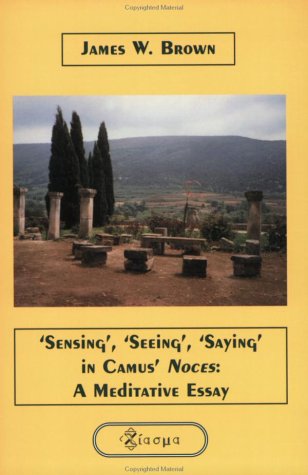Chiasma
1 primary work
Book 14
James Brown's study of Camus' Noces explores the many crossovers from mind to text by recording the writer's consciousness as an emanation and the reader's consciousness as a reception-perception. Writer and reader become one in this movement. Their shared mental space is analogous to the locus of the transmission of wisdom in many spiritual traditions. This book focuses on the textual and linguistic means through which the crossover takes place. Brown's new reading of Camus is an outgrowth of bare awareness meditation. He subjects a text that was intended by Camus as meditation to another meditative consciousness, that of the reader-writer who comes to Noces without ideological baggage. In this sense the reading process itself becomes an 'essay' in the original meaning of the word: a trial, an attempt, an inquiry. Another original aspect of 'Sensing', 'Seeing', 'Saying' is the fact that the reading process doubles as non-directed meditative practice, for it does not attempt to interpret, judge, or evaluate the text in question but aims to engage it spiritually, to enter into its 'presence'. As background to his reading the author uses vipashyana, or insight meditation, which derives directly from the Buddha's own experience and teaching.
